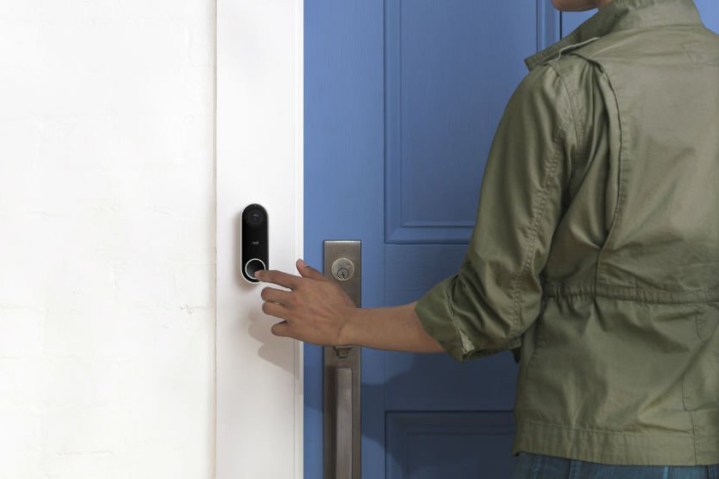
Nest has come a long way since its simpler days as a smart thermostat creator. The Alphabet-owned company announced a slew of new products, including a full-blown home security solution, in September 2017. The launch — which included the Nest Secure alarm system, Nest Hello video doorbell, Nest Cam IQ outdoor security camera, and corresponding software and services — doubled the company’s portfolio of hardware, and helps show some of what Google is getting from its $3 billion investment. Now Nest has unveiled yet another new product — a $39 Temperature Sensor that works alongside the existing smart thermostats to help keep your home at a comfortable temperature.
After being made available for pre-order in April, the Nest Temperature Sensor can now be purchased from the Nest website, as well as the Google Store. The handy device can be placed on a wall, shelf, or anywhere else, and can be added to your Nest system in the Nest app. Simply set the temperature you’d like to maintain, and the sensor will communicate with your Nest Learning Thermostat or Nest Thermostat E to ensure that temperature is honored.
The sensors can be positioned a maximum of 50 feet away from its associated thermostat, and a single thermostat can be paired with up to six temperature sensors. Of course, your home probably doesn’t need to be kept at six different temperatures, but hey, to each her own. You can buy one for $39, or a three-pack for $99.
Recently, Nest also announced that its new security system could store all of the footage it captures for five days for just $5 a month as part of the Nest Aware plan. The Nest Secure alarm system includes the Nest Guard, Nest Detect, and Nest Tag. The Guard — touted as the hub, or “brain,” of the operation — promises to serve as an all-in-one security base, providing the alarm, keypad, and motion sensor, as well as the voice behind the system. The Guard has a keypad but also can be controlled via a fob.
Then there’s the Detect, a magnetized sensor that senses both motion and light movement. If you place it on a window, it’ll tell you when the window has been opened. If you place it on a wall, it will sense motion in a room. The last component of the alarm system is the Nest Tag, a fob you can add to your keychain that allows you to easily arm and disarm the Nest Secure system even if you don’t have a pass code. All you have to do it hold the fob against the Guard. Nest promises that the setup is simple and will take 30 minutes or less.
The Nest Secure starter pack, which includes Nest Guard, two Nest Detects, and two Nest Tags, retails for $499.
Nest also offers a video doorbell, which combines the security and intelligence of a Nest Cam with the functionality of a doorbell. The Nest Hello features a built-in, 160-degree wide-angle lens that will show you footage of anyone at your doorstep in HDR-quality video with a 4:3 aspect ratio.
The doorbell also promises advanced person detection and intelligent facial recognition, as well as a built-in speaker and microphone. Customers can also access “Nap Time Mode,” which basically makes it so that your doorbell won’t chime at certain times during the day, as well as “Quick Response,” which allows you to play a recorded message anytime someone rings the doorbell. The Nest Hello began shipping on March 15, and is priced at $229.
Rounding out Nest’s new smart home solutions is the Nest Cam IQ outdoor security system, an outdoor security camera that promises to be tamper- and weather-resistant. You can buy one of these units now for $349.
In order to check out your security footage, Nest has previously offered two plans: one for $10 a month that allows folks to store 10 days of video history, and one for $30 a month that gives you 30 days of video history. But with the introduction of the $5 Nest Aware plan, the company is now offering even more wallet-friendly options.
On top of the cloud video recordings, you can also now teach your Nest cameras to set up “Activity Zones,” which will alert you to activity in certain areas, or create time-lapses.
“When we looked at the home security market, we saw a similar landscape to when we entered the thermostat market,” said Matt Rogers, Nest’s founder and chief product officer. “Just as people tend not to use programmable thermostats because of their complexity, the current home security offerings are also a huge pain to live with. We set out to design a product that isn’t just effective during a security incident, but is delightful and easy to use when people are at home with their families, living their lives, which is the vast majority of the time.”
Updated on May 3: Nest Temperature Sensors are now available for purchase.


